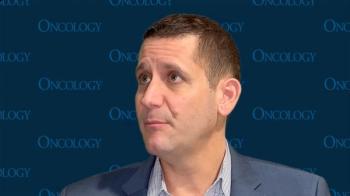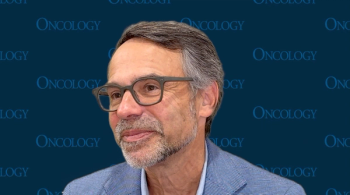
Fonseca on Findings for First- Vs Second-Line Daratumumab for Transplant-Ineligible Myeloma
CancerNetwork® spoke with Rafael Fonseca, MD, about findings from a simulation using real-world data sets to compare the utility of daratumumab-containing regimens as either frontline or second-line therapy.
At the
Transcript:
Our simulation went as follows. We decided to look at SWOG [S0777] at those over the age of 65. Again, as was published, there’s no difference in overall survival [compared with the MAIA trial]. But because it has a mixed population, we looked at a real-world data set of patients who would receive frontline therapy with RVd in this aged population, so that was number one. By the way, we did a study with SWOG and the results are the same. We also took the data on D-Rd that was published in MAIA, both for the D-Rd arm and the Rd arm—so you have their D-Rd, RVd, and Rd, those are the 3 regimens we’re going to study for frontline therapy.
The second point is that we asked if you were treated with D-Rd, what would you use for that first relapse? We presume that would be predominantly carfilzomib [Kyprolis] and pomalidomide [Pomalyst]–containing regimens. Whereas if you were first treated with RVd or with Rd alone, you would be treated with a daratumumab-containing regimen. So that would be the second line. And for that information, we use the Flatiron Health database to see how much we see with regards to duration of therapy and overall survival. So those were the 2 data sets.
Now, we looked at the range of attrition. Our group and the work of others has shown that there is significant attrition between the various lines of therapy, particularly for patients who are ineligible for transplant. We published that that attrition can be as high as 50%. Now we looked at an upper boundary and a lower boundary, and I’m going to focus on the results of those that have that lower boundary which was 27.2%. But regardless, the results are the same independent of which attrition rate we use.
A logical question would be, ‘why would you not use something like the POLLUX trial [NCT02076009] as a control for that first relapse?’ The reason is, patients in policy are different from patients who would go into [the MAIA trial]. Two descriptors that would make the case for that is: number one, they’re about 10 years younger. And as another example, about 60% of them had a prior stem cell transplant so it’s not the same patient population. We also use the real-world data sets for second-line data.
And we took the 3 states, of course, being first line, second line, and, unfortunately, those patients who succumb to the disease. What we found is that overall survival for patients who started with D-Rd and then are followed by pomalidomide and carfilzomib would be about 9.1 years, which is about 2 and a half years longer than starting with RVd. It’s almost 3 and a half years longer than if you start with Rd alone. Now, I think we all get it. If you’re thinking this, everyone gets it. If we had a prospective randomized trial that could look at all this with continuation of therapy for these patients including intention to treat and attrition, that would be ideal. But given that we have 2 regimens that are accepted, we thought it was quite useful to do this comparison. Our results would suggest that starting with the best drugs at the beginning makes sense, the best drug in this case being the MAIA-based regimen. The fact that you have a regimen that will not be producing peripheral neuropathy is critical, especially as patients are living, 5, 10, and 15 years [longer], where this will have a significant impact on their quality of life.
Reference
Fonesca R, Facon T, Hashim M, et al. First-Line Use of Daratumumab, Lenalidomide, and Dexamethasone Confers Survival Benefit Compared with Second-Line Use of Daratumumab-Based Regimens in Transplant-Ineligible Patients with Multiple Myeloma: Analysis of Different Clinical Scenarios. Presented at the 2021 American Society of Hematology Annual Congress. December 11-14, 2021. Virtual. Abstract 118. https://bit.ly/3pLLttF
Newsletter
Stay up to date on recent advances in the multidisciplinary approach to cancer.
















































































